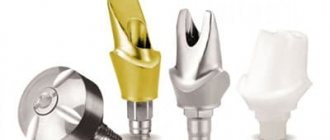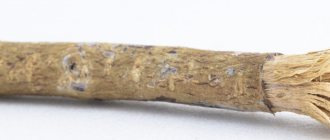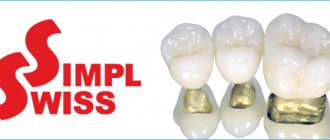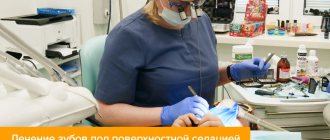Dental prosthetics using implants is a dental procedure in which a structure is implanted into the structure of the bone tissue, completely replicating the structure of the lost unit. One of the important elements of the system is the abutment, which acts as a connecting link between the artificial rod and the crown. The stability of the prosthesis depends on the quality of the connection, the task of which is to correctly distribute the chewing load on the jaw row. Among the options offered by manufacturers, the multiunit abutment deserves special attention, the features and advantages of which we will consider in this review.
General overview
In 2000, Nobel Biocare introduced its latest development to the dental market - the Multiunit abutment. At the time, this dental implant product was the first of its kind and immediately became a recognized industry standard.
A considerable part of the world's manufacturers have tried to replicate the unique design of the abutment, but the presented product has retained its advantageous design features that distinguish it from its analogues in a number of nuances that determine successful implantation.
Multiunit abutments are fixed using a special screw connection, without the use of dental cement.
If the need arises, the prosthetic structure can be easily and painlessly dismantled for correction or complete replacement , while maintaining the integrity of the implant and its stability.
Multi-units are more often used when installing single bridge structures supported by 4 or 6 implants. In some cases, the use of the method is justified for prosthetics on implants embedded in the bone not at a right angle.
As a result of using the presented products in practice, the patient is fitted with a conditionally removable orthopedic structure, which can be easily removed from the oral cavity after unscrewing the fixing elements.
A single or bridge structure is secured using a special screw that secures the prosthesis to the multi-unit.
Remarkable! Screw multi-component abutments provide reliable fixation due to the passage of screws through the surface of the orthopedic product. The holes are closed with a composite of the appropriate shade.
In case of complete loss of teeth, prosthetics using the Multiunit system gives excellent results. The specialist has the opportunity to perform passive multi-support restoration and insert implants into the bone at different angles in relation to the contacting teeth or to each other.
In what cases is ultrasound dental implantation justified and the advantages of the technique?
Visit here to learn more about temporary dental implants.
At this address https://zubovv.ru/implantatsiya/metodiki/harakteristiki-materialov.html we will tell you what material dental implants are made from.
Multi-profile Multi Unit abutment for dental implantation
An abutment is a durable connecting element that combines a dental implant with an artificial crown or dental bridge. The lower part is connected to the titanium root, the upper part serves as a support for the crown. The variety of adapters is due to variations in parameters, shape, angle of inclination, materials, manufacturers and installation methods. The variety of variations makes it easier to select the appropriate superstructure for any prosthetic case.
Multiprofile MultiUnit abutments are used for conditionally removable structures. A distinctive feature is that the Multi-Unit is secured exclusively with screws . This type of fastening is more durable than cement fastening and allows the structure to be disassembled if necessary.
Multi-unit Plus have a snap-on feature that allows you to reline the implant. They are often used in All-on-4 technology, which allows the installation of 4 metal roots, followed by fixation of the bridge.
Multi-unit abutments are:
- Straight - suitable for the classic version of implantation, when the implanted structure assumes a straight line. Often used for the frontal zone.
- Angled - used for implanting implants at an angle from 17 to 90 ⁰, to compensate for the divergence angles between the axes of the titanium root and crown. Equipped with a fixing screw and holder.
Standard models (Unit-abutment) - mass produced, universal, cheaper. Despite their popularity, they have a number of disadvantages:
- do not repeat the exact shape of the tooth;
- have errors in parameters;
- do not match the contour of the gums.
Even minimal deviations in parameters can lead to irritation and inflammation of tissues.
Individual suprastructures are also produced taking into account the anatomy of the gums, the configuration of the dentition, according to three-dimensional modeling and casts of the patient’s jaw. The precise, rational shape of personal adapters greatly increases the success of implantation.
Technical characteristics and equipment
The Multiunit technology line provides an enviable assortment of abutments that differ in size and indentation height. In addition, when fixing a product with a crown, the angle of inclination can vary from 5 to 35 degrees.
Many parameters indicate the versatility of the system. In practice, implantologists often use the following Multiunit systems:
- multi-component type of direct connecting link – compensates for the angle of divergence between implants up to 40°;
- multi-component type of corner connecting link - compensates for divergence angles up to 74°;
- multi-component type of corner connecting link – balances the divergence angle up to 100°.
The products differ from analogues in their special design, namely:
- short cone - helps solve the problem of limited interocclusal distance;
- 9 neck height options - straight and angled tie links to suit any type of gum tissue;
- wide base , which simplifies the process of installing the prosthesis;
- pre-positioning holder , which is provided at each abutment for use as a guide in determining the angle of inclination.
The direct abutment kit includes the following items:
- abutment;
- plastic holder;
- plastic cap with a fixing screw element;
- sealing healing product made of metal.
Angled abutment kit components:
- connecting link in tandem with a screw element;
- metal holder;
- simulated plastic cap with fixing screw;
- sealing healing product made of metal.
Together with the presented product, an orthopedic kit, a complete surgical kit, a navigational surgery kit, try-in abutments, and small hex keys are used.
Zirconium dioxide abutment
Zirconium is highly aesthetic, so the use of such abutments would be appropriate for connecting a metal implant and prosthesis in the smile area. The gums look as natural as possible, since they do not come into contact with metal, and therefore are not stained. In addition, white zirconium dioxide abutments are invisible even with ceramic veneering - this is how artificial teeth fully imitate natural teeth.
Zirconium dioxide abutment
Indications and contraindications
Implantation using Multiunit technology is indicated in the following cases:
- elimination of a single defect using a crown;
- installation of a bridge structure to fill a defect consisting of several missing elements of the dentition;
- restoration of the dentition with complete edentia;
- the need for trouble-free dismantling of the structure when necessary;
- small interalveolar distance.
Among the temporary contraindications, experts identify:
- inflammatory processes in periodontal tissues;
- poor implant stability;
- pathological processes in bone structures (in the area of implantation);
- poor osseointegration.
An absolute limitation is considered to be the insufficient volume of soft and bone tissue, when it is not possible to optimally firmly fix the entire orthopedic system using Multiunit technology.
How promising is implantation after removal of a tooth with a cyst and the techniques used.
In this publication we will discuss what to do when a tooth implant falls out.
Here https://zubovv.ru/implantatsiya/metodiki/aspektyi-uspeshnoy-pensioneram.html read what difficulties may arise during implantation in old age.
Temporary
Such models are made of plastic and are designed to connect an artificial tooth root with a temporary fixed prosthesis at the stage of implant healing. Or for trying on future prostheses, as well as their modeling. They are quite light and do not interfere with the process of fusion of bone tissue with the implant body, while having good aesthetics and fairly high strength.
Temporary abutment
Installation protocol
The use of multi-units in dental implantology practice is justified in many clinical cases. The specialists of most dental clinics have sufficient experience to successfully install the products in question.
Multi-component abutments are installed according to the following algorithm:
- remove the plastic or metal holder from the packaging (depending on the type of abutment - straight or angular) and use it to screw the multiunit onto the implant;
- remove the holder using a counterclockwise rotational motion;
- perform control fixation of the abutment using keys and other instruments (the applied force should not exceed 30 N/cm).
For reference. The final tightening of the screw part of the multi-component link is carried out using a screwdriver MT-NMK02 and a miniature wrench with a built-in dynamometer MT-RIO40.
During operation, multi-units are serviced in clinics in accordance with the established work plan:
- unscrew the prosthetic structure from each side of the fastening and remove it from the patient’s mouth;
- clean the inside of the prosthesis from dirt and plaque;
- remove dirt and other deposits from the surface of the beam (not in all cases);
- perform cleaning manipulations on the upper part of the implant;
- assess the condition of the titanium rod and its stability;
- fix the multi-profile structure in its place using a holder and keys.
Remember! Despite the fact that a screw connection involves removal, unlike cement fixation, it is highly not recommended to perform this procedure yourself.
This can lead to tissue injury and failure of the entire structure. Only a doctor can correctly dismantle a multi-unit using special devices and equipment.
In the video, see the procedure for implantation on MultiUnit abutments.
For screw fixation
These are a special type of abutments that are used to secure crowns with screws. They can be either straight or inclined (multi-unit - we talked about them above). In this case, the elements are connected using small screws - they are screwed into the abutment through the top of the crowns. To prevent the “hats” from being visible, the chewing surface is covered with a thin layer of composite.
Abutment for screw fixation
This type of abutment is mainly used in situations where there is a need to remove dentures. For example, when using implantation methods with immediate loading, when dentures are placed immediately after implantation.
Main advantages
Multiple positive features of the system determine the popularity of its use in dental clinics:
- Carefully thought out design that increases the efficiency of the product.
- Conditional rent . Fixation of the prosthesis on the abutment is carried out without the use of composite materials. A special screw allows you to remove the denture at any time for a preventive examination or professional cleaning of the oral cavity.
- Possibility of high-quality prosthetics with complete edentia . The technique allows you to install a single orthopedic prosthesis supported by 4 or 6 implants. This design is highly stable and can be easily removed.
- Safety . When using cement to fix dentures on the abutment, particles of the mixture may end up getting under the gum, which causes the development of inflammatory processes. In some cases, such undesirable consequences can result in implant rejection.
Fixation of the prosthetic structure onto multi-units is carried out using a screw, which ensures a reliable connection. This feature significantly reduces the risk of complications.
- Selecting the angle of inclination. Various variations in the inclination of multi-units make it possible to compensate for the divergence angles of installed implants in any clinical picture and create a durable and aesthetic prosthetic system.
- High aesthetic result, which is achieved due to the ability to select the height of the abutment taking into account the individual height of the patient’s mucosa.
- Simplicity and effectiveness of restoring the integrity of the dentition even with a small interalveolar distance.
Let's look at a list of minor deficiencies that may arise during installation work:
- Working with multi-units becomes difficult if the angle is deviated by more than 100°.
- It is not always possible to ensure optimal occlusion in a number of clinical cases.
- To achieve a high aesthetic result, a specialist must bring the screw shaft to the occlusal surface, and this delicate work requires scrupulous adherence to the established algorithm of actions.
Individual
Such abutments are developed to special order and adjusted to the individual characteristics of a particular patient. Their creation became possible thanks to the advent of advanced computer technologies. Using CAD/CAM, a sample of the future abutment is modeled, after which the design is created on a robotic machine. As a rule, such abutments are no longer made of metal, but of zirconium, and are used mainly for the restoration of front teeth. This is where aesthetics are most important.
Custom abutment
The price of such a product, of course, will be an order of magnitude higher, but it has practically no disadvantages. Only advantages: excellent fit, the ability to take into account all the nuances, reduced risk of inflammatory processes, adjustment to the gums, ideal aesthetics.
Warranties and service life
The service life of the installed multi-unit adapter, as well as the implant itself, can be counted in decades. Manufacturers provide consumers with a guarantee for multi-units for a period of 12 years.
The duration of operation largely depends on a number of factors:
- quality of workmanship and positive properties of the material from which the connecting link is made;
- abutment structure;
- strength of fixing connections;
- experience of the doctor performing the installation;
- condition of tissues in the oral cavity.
During the operation, the abutment is fixed in the gum tissue and access to it is impossible. In this regard, the product itself does not require special hygienic care. It is necessary to care for the tissues and organs of the oral cavity and the orthopedic structure itself.
Basic hygiene rules:
- Morning and evening cleansing of the oral cavity and dentures . Particular attention should be paid to the places where the structure adheres to the gum.
- Floss after every meal and rinse with an antibacterial mouthwash whenever possible.
- Reduce the consumption of too hard foods (nuts, crackers, roasted vegetables, etc.) to a minimum.
- Visit your doctor regularly for follow-up examinations and professional cleaning of the prosthesis.
Additional deep cleansing of hard-to-reach areas is provided by a device such as an irrigator.
It produces a powerful water jet that effectively removes bacterial plaque, massages the gums, improves blood circulation and promotes the normal growth of periodontal tissue.
Titanium
One of the main properties of a titanium abutment is its incredible strength, which virtually eliminates cases of product fracture under any load. Also, the material is completely biocompatible with the human body. However, like the implant itself, titanium is also used for its manufacture. Ideal for dental prosthetics in the chewing area, it is able to withstand and redistribute strong mechanical loads.
Titanium abutment
Quality standards and price
Multiunit abutments fully comply with ISO standards, each type of product has its own certificate. The quality of products is checked regularly at all stages of the production process. Each aesthetic adapter is numbered, so fakes are impossible.
The cost of installation of the presented products in Moscow clinics with an average pricing policy starts from 2000 rubles.
Implantation of an implant with fixation of a multicomponent aba will cost the patient about 35,000 rubles.
Multi-unit implant system ROOTT
The ROOTT universal implantation system presents a line of one-component multi-unit implants for screw fastening of prosthetic structures.
- COMPRESSIVE
M. Single-piece implant with multi-unit, standard diameter. Used for screw fixation of full and partial prosthetic structures. - COMPRESSIVE MP
. A one-piece multi-unit implant for installation in the pterygoid region, avoiding the sinus lift procedure. - COMPRESSIVE MS
. Long, narrow monoblock implant with multi-unit for installation in a narrow alveolar ridge. Used for multiple restorations in the anterior region.
All models of the COMPRESSIVE line with multi-units are characterized by:
- high initial and subsequent stability;
- reliable screw fixation; taking impressions at gum level;
- adjustable abutment angle;
- ability to be combined with other multi-unit implants.
Reviews
After reading the article, it became clear that orthopedic structures with screw fixation on implants have a number of advantages in dental implantation and deserve a leading position in terms of popularity of use.
After all, the quality, reliability and ease of use of Multiunit systems are at the highest level.
What do you think about the advantages and disadvantages of the presented designs? We look forward to your opinion in the comments below.
If you find an error, please select a piece of text and press Ctrl+Enter.
Tags abutment implantation
Did you like the article? stay tuned
No comments yet
Heal former
It is installed only temporarily; you need to wear it for about two weeks at the final stage of implantation. It helps to form a beautiful, smooth and clear gum contour. They will be used if you are restoring teeth using two-stage implantation with delayed loading of the prosthesis. Once the implant has completely taken root, the gum is opened, and the plug protecting the artificial root is replaced with a former.
Heal former











